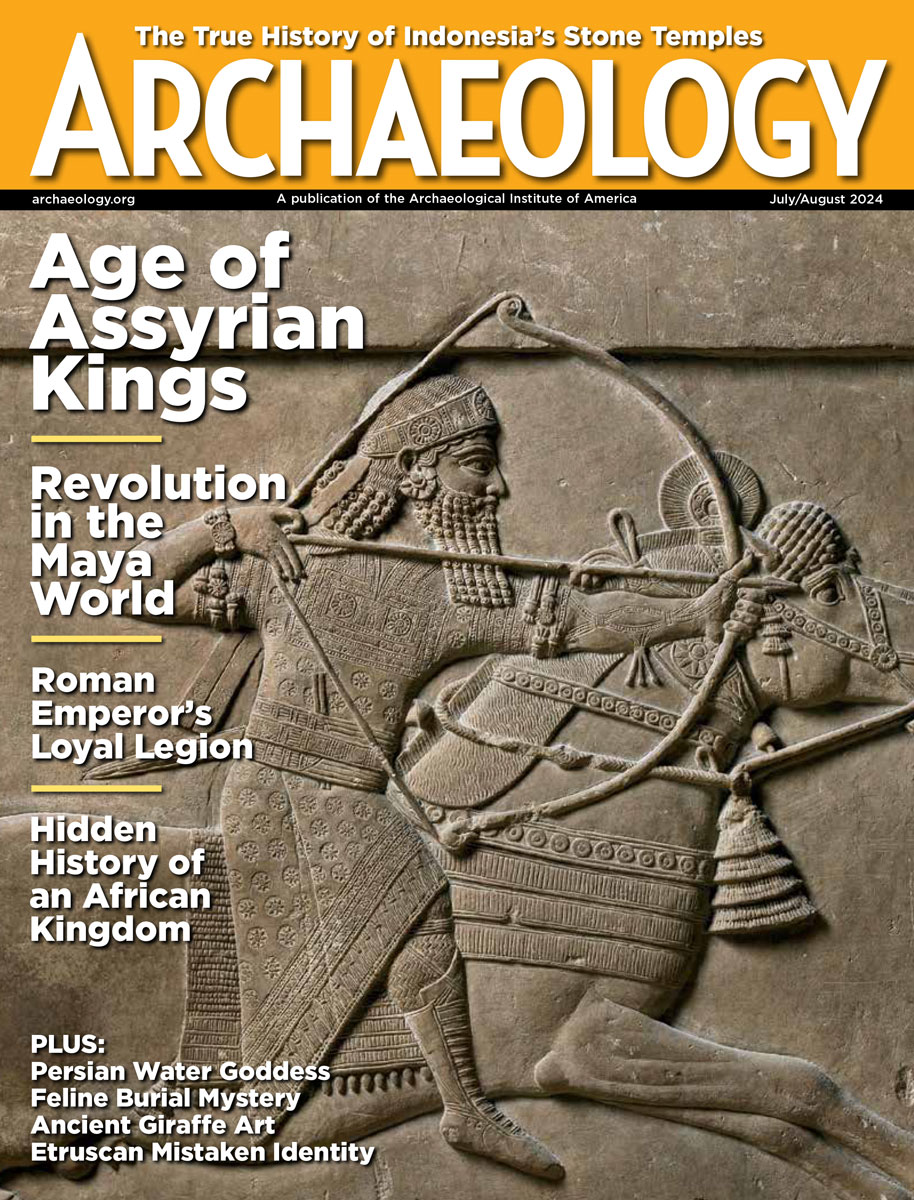Tuesday, January 13
January 13, 2009
Excavations in an Armenian cave have yielded what may be the oldest-known preserved human brain from the Old World. Wine-making tools and debris, skulls, metal knives, fruit seeds and grains, rope and cloth, and pottery were also found.
In New Zealand, archaeologists think they have found traces of a 700-year-old building, one of the oldest in the country.  Â
British and Italian scientists are working together with the latest technology to study a painted statue of a wounded Amazon warrior discovered in the volcanic ash at Herculaneum. Â
DNA testing of the parchment of medieval manuscripts may help researchers determine when and where a manuscript was written. “Dating and localizing manuscripts have historically presented persistent problems because they have largely been based on the handwriting and dialect of the scribes who created the manuscripts – techniques that have proven unreliable for a number of reasons,” said Timothy Stinson of North Carolina State University. Â
Clothing unearthed two years ago in a tomb in South Korea will be designated as cultural assets. The clothing dates to the sixteenth century, before the Japanese invasion of 1592. Â
The remains of an American soldier killed in North Korea in 1950 have been identified by the Joint POW/MIA Accounting Command. Master Sgt. Cirildo Valencio will be buried at Arlington National Cemetery. Â
Human hunting and gathering has had a “profound impact” on plants and animals. Humans have tended to hunt large prey animals, while other predators pick off the small and the weak. “It’s an ideal recipe for rapid trait change,” said Chris Darimont of the University of California, Santa Cruz. Â
Watch Zahi Hawass, Egypt’s antiquities chief, hand over a looted bronze figurine to Iraq’s charge d’affaires, Abdel Hadi Ahmed, at National Geographic News. Â
The Times Online from Britain has featured ARCHAEOLOGY’s article, “Secrets of Maya Beauty,” today.
- Comments Off on Tuesday, January 13
January 12, 2009
Zahi Hawass, Egypt’s antiquities chief, returned a bronze statue that had been looted from Iraq to the Iraqi Charge d’Affaires, Abdel Hadi Ahmed. An Egyptian man who had been working in Jordan was caught trying to smuggle the figurine into Egypt. Â
Digging continues at the Marmaray project in Istanbul, where archaeologists have unearthed a Neolithic grave and a settlement dating between 6400 B.C. and 5800 B.C. It had been thought that the area was first settled around 700 B.C. Â
The Turkish city of Izmir is reclaiming its ancient agora, which will be opened as an archaeology and history park.  Â
Underwater archaeologists are investigating an Ottoman ship that sank off the coast of Kushimoto, after its crew delivered a letter and a medal from the sultan to Japan’s Emperor Meiji in 1890.
Shipwrecks off the coasts of Israel and Turkey suggest that frame-based shipbuilding began about 500 years earlier than previously thought.  Â
Sasanian warriors burned the bodies of fallen Roman soldiers with pitch and sulfur to block the entrance to a siege tunnel at Dura-Europos, in Syria. The Roman garrison eventually fell to the Sasanians, who abandoned it. Â
Ancient Greeks may have sold wine out of their homes, rather than building separate taverns, say Clare Kelly Blazeby of the University of Leeds, and Allison Glazebrook of Brock University in Canada. Hundreds of cups have been found in homes that had been assumed to be wealthy residences. “A lot of trade and industry was based within the home,” said Glazebrook. Â
An undisturbed, ancestral Puebloan settlement has been found at the Springs Preserve in Las Vegas. Archaeologists are excavating a pithouse dated to 700 A.D. Remote sensing equipment may have spotted two more pithouses. Â
Maritime historian Robert Prescott of the University of St. Andrews has been looking for the HMS Beagle, and he thinks he may have found it on the banks of the River Roach near the English village of Paglesham. The ship carried Charles Darwin to the Galapagos Islands on its second great voyage between 1831 and 1836.Â









